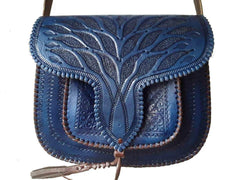Even recently the dromedary was observed throughout the Moroccan territory. Sometimes used as pack animals by transhumant, sometimes for plowing. The increasing of sedentary population, and the modernization of agriculture, its numbers have decreased drastically over the last thirty years. According to an estimate made in 1989, at present, there would be about 40,000 camels in Morocco. Moreover, many of them are intended for slaughter. As an indication, in 1986, 7800 camels were shot dead and which gave 1400 tons of meat. Other animals are still available to tourists in Tangier, Marrakech or Agadir.
Place in the oral tradition
The camel is well known among Berbers (Braber) of Middle Atlas and the High Atlas Oriental, and in some Rif, under the name alγem / pl. ileγman (often noted alγwm / ilwγman).
Very often present both on the ground and in place names, the dromedary draws the attention of any observer when he addresses the Moroccan mountains, including the eastern mountains, especially when consulting a map. Some examples from the only country Ayt Yafeman (Eastern High Atlas) will suffice to illustrate this, like in the region of Imilchil where rises Adrar n-Ilouγman ( "mountain camels"). These names evoking an actual or recent presence of the dromedary, emphasize its importance in the population live.
As part of oral literature, the camel came less often as the privileged actors are the jackal and the hedgehog, but he figures prominently in the tales of animals. The rank he occupies in the hierarchy is barely lower than the lion, which it is sometimes confronted. He embodies a type of rather naive character: sensitivity iridescent sentimental, coupled with an exaggerated pride which drives him to search confrontation. Comic a bit stupid, it could further qualify the paladin of the absurd, so Don Quixote, burning to do battle with others.
The dromedary as being boastful but cowardly, too, is amply documented. In the dialects tacelḥiyt in principle the camel wants to provoke the lion in single combat, convinced that he is the strongest of animals, through the hedgehog. This ultimately makes fun of the two rivals playing on their fears. This is the trait of ambiguity as to the actual strength of the opponent, based on the volume of feces of the animal, with the famous words of the lion: "... If this is only his package , what then is the size of the camel itself? "
On a more serious one can not fail to raise the Moroccan hagiography register in the role of the camel as a sacred animal. He intervenes in the history of the creation of zaouïas; This qualification of the dromedary as sacred vehicle is easily understood if one recalls the recommendations of this beast in the sacred scriptures.
So is this a multifaceted animal that is perceived through the examples given. On the old amaziγ background stories of animals in education, where the rebellious and sentimental dromedary actually quite poorly, came to collect contributions from the East, with the vector Islam and the Arabic language, which present our animal in a more eclectic day and thus much more favorable.
Place in the leather indusctry
The camel skin is used in leather craft as well as sheep or goat skin. The camel skin will sell more expensive than the skin of goat or sheep, because it is more scarce and the price of a camel is much higher than that of a sheep or a goat.
The camel pattern is also widely present in leather work. Many models of leather bags and shoes are inspired by this animal. It is used in the patterns engraved over the leather, as you can see in some leather bags of Moroccan Corridor leather bags collection:






























